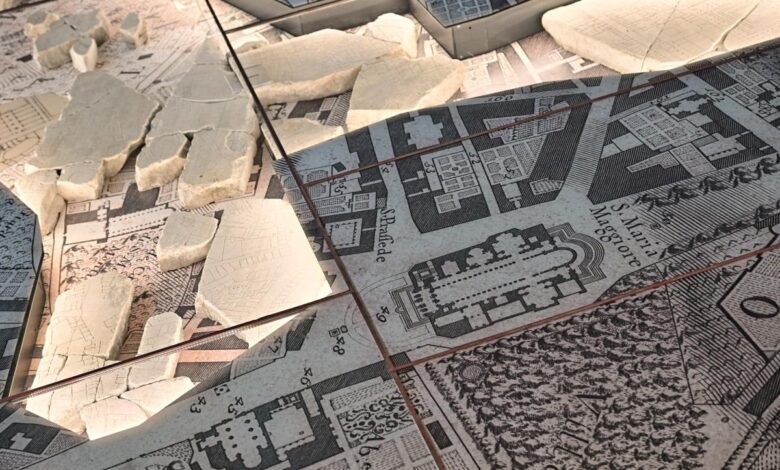A remarkable historical map reappears in a new Rome museum

On January 11, a long-hidden treasure of ancient Rome, the marble map known as the Forma Urbis, has found a new home in its own museum, set against the iconic backdrop of the Colosseum. The Museum of the Forma Urbis is part of a fresh archaeological park situated on the historic Caelian Hill, adding to Rome’s array of attractions as it aims to enhance its appeal to the ever-increasing number of tourists.
Rome Mayor Roberto Gualtieri expressed his excitement on the occasion, stating, “This is a beautiful day. We are launching a new museum with a masterpiece that hasn’t been seen in almost a century as well as an archaeological park in a remarkable area of the city. He emphasized the city’s vision of creating a seamless connection between museums and streets, allowing people to appreciate the beauty of Rome while gaining a deeper understanding of its transformation over time.
The Forma Urbis, an intricate marble map of ancient Rome, was crafted during the reign of Emperor Septimius Severus between 203 and 211 AD. Engraved onto 150 separate slabs measuring 18 by 13 meters, it adorned a wall in the ancient city. Unfortunately, over the centuries, it deteriorated, with some slabs repurposed in local constructions. Despite being a crucial resource for understanding ancient Rome’s layout, the surviving fragments, around 10% of the original, haven’t been displayed together since 1924.
In its innovative new setting, the recovered fragments are laid out on a reproduction of a renowned 18th-century map of Rome by surveyor Giovanni Battista Nolli. This map, considered the first accurate street plan of Rome, provides context for the marble chunks, illustrating their relation to the developing Renaissance city.
Outside the museum, the open-air park on the Caelian Hill showcases walkways adorned with ancient Roman grave markers and marble columns unearthed in recent decades. Claudio Parisi Presicce, overseeing Rome’s cultural heritage, highlighted the significance of the Caelian Hill, which had been in obscurity for a prolonged period. He remarked, “Today, we are finally giving it back to the city,” emphasizing its importance in connecting monumental areas like the Imperial Forums, the Roman Forum, the Colosseum, and the Appia Antica.
This 5-million-euro ($5.5 million) project forms part of Rome’s broader refurbishment efforts, coinciding with a surge in tourism following the end of the COVID-19 pandemic. Anticipating an influx of visitors during the 2025 Roman Catholic Holy Year, the city is dedicated to preserving and showcasing its rich historical heritage.




